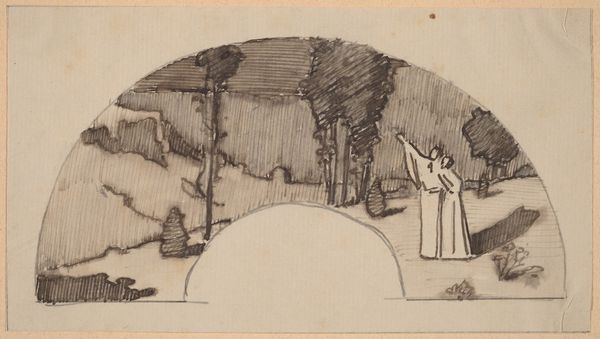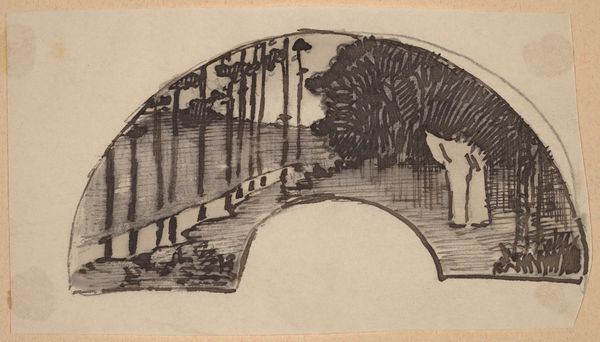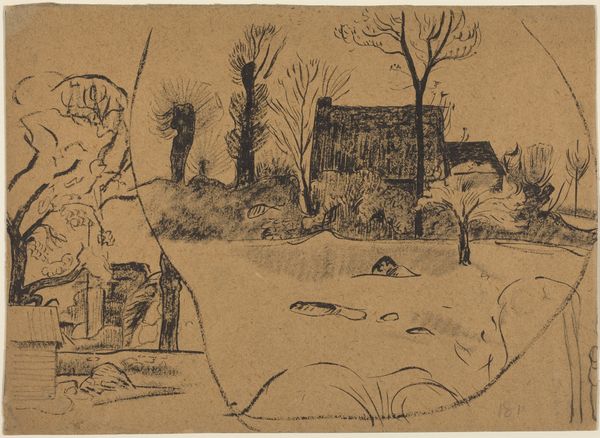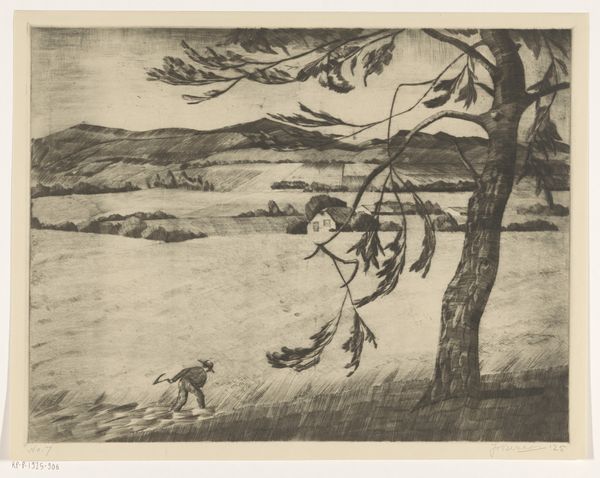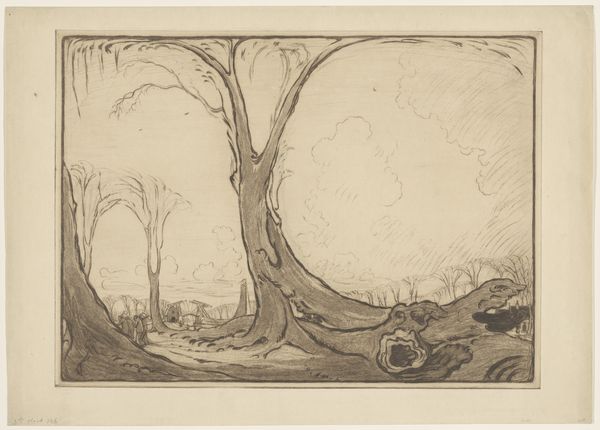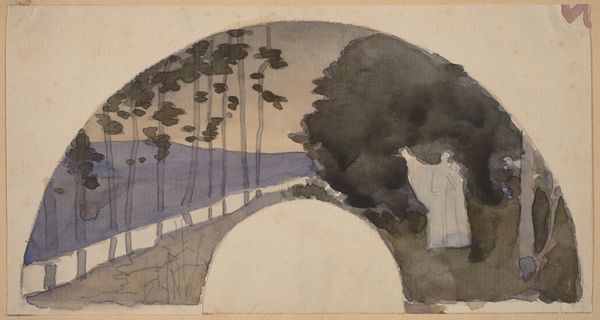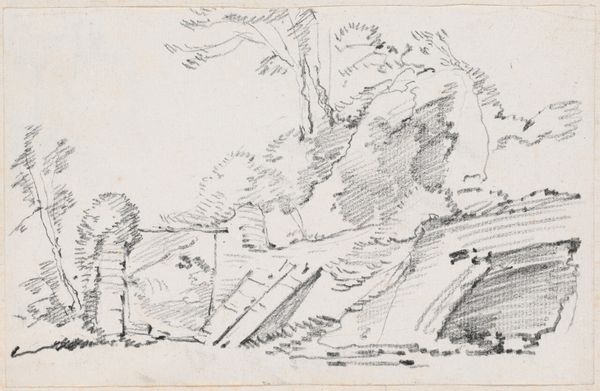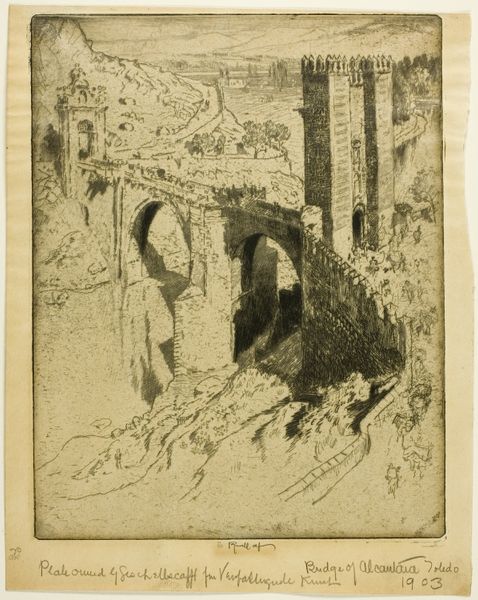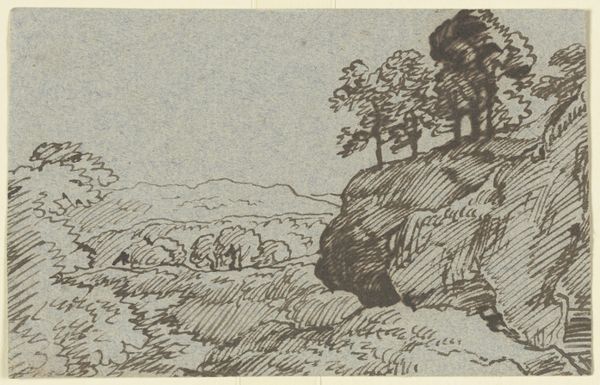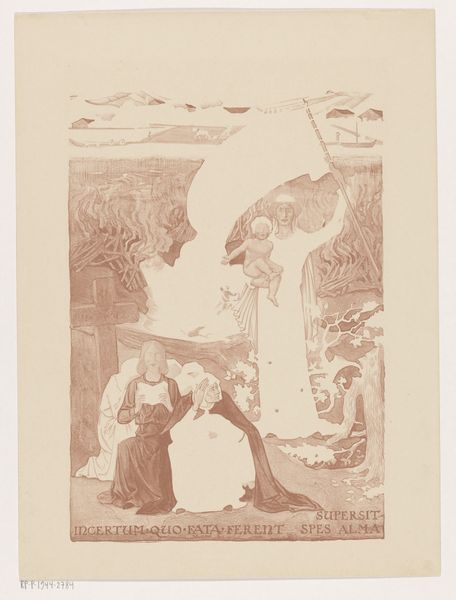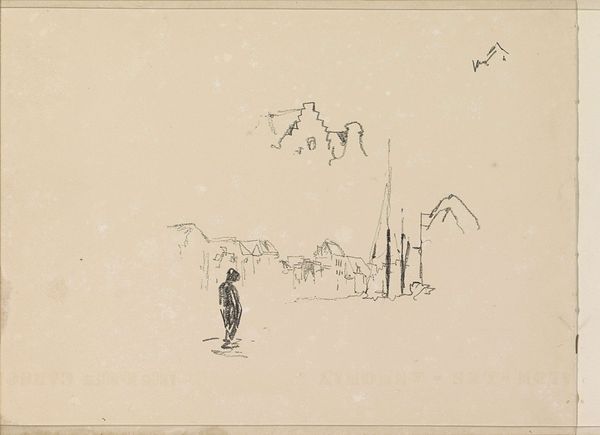
drawing
#
drawing
#
landscape
#
symbolism
Dimensions: sheet: 8.4 × 14.9 cm (3 5/16 × 5 7/8 in.) mount: 30.2 × 46.1 cm (11 7/8 × 18 1/8 in.)
Copyright: National Gallery of Art: CC0 1.0
Curator: This is Charles Sprague Pearce’s “Study for an Archway,” a drawing created sometime between 1890 and 1897. Editor: Hmm, immediately, I feel this almost... theatrical sense of melancholy. It’s as though a stage set were preparing for some unspoken tragedy, veiled in stark shades. Curator: Pearce was certainly engaging with Symbolist ideas around this time, so that dramatic sensibility tracks. We have these robed figures in the drawing, leading us toward an archway opening to what looks like manicured gardens. Editor: The figures are quite striking, aren't they? Their garments flow like spectral waves, their arms raised as if heralding or lamenting, I can't tell. I imagine they're caught between worlds, poised between sorrow and acceptance. It reminds me of an understaded operatic staging of grief. Curator: It is compelling how that Symbolist focus often resulted in emotionally intense works, though frequently drained of clear narrative. The social conditions in Europe—anxieties surrounding modernity, religious questioning—are reflected, though perhaps indirectly, in this sort of inward artistic exploration. Editor: Inward, yes. The sharp linework and lack of color intensify the focus, creating an air of introspection. It is as if Pearce wants to capture not just the landscape but its echo in our souls. I find it difficult to not respond personally to the emotional rawness, it pulls me into an imaginary, internal play, where I try to act the characters. Curator: These Symbolist landscapes invite that emotional reaction, rejecting straightforward depictions of beauty or nature's grandeur. Instead, there's a deliberately staged and somewhat unnerving beauty present, one crafted, arguably, for a museum or salon context, catering to a sophisticated, questioning public. Editor: I hadn’t thought about it that way! This is great because it transforms a purely emotional interaction into a narrative embedded within our history. I leave with an emotional echo mixed with the faint historical reminder of art patronage that shifts perspective, and allows one to enjoy an unearthing feeling. Curator: Exactly! It's always productive to hold both in mind: the artwork's emotional potential and the world of production that helped create it. Thank you for those astute observations.
Comments
No comments
Be the first to comment and join the conversation on the ultimate creative platform.
